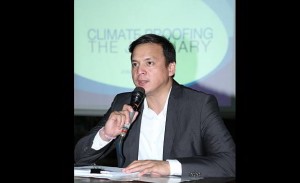A “climate-proof and green” courthouse is what the Supreme Court envisions for the soon-to-rise Judicial Complex in Cebu City.
Supreme Court Administrator Jose Midas Marquez said last Thursday that the High Court wants to cushion the effects of extreme weather conditions caused by climate change in the future.
For example, they plan to use solar panels to convert light into electricity.
“Cebu City’s Judicial Complex should be a model showcase, not just for the Philippines, but for the world,” Marquez told reporters after he delivered a speech during the culmination of the three-day Environmental Law Talks 3 at the Eco-house of Cebu City Councilor Nestor Archival in Talamban, Cebu City.
He said the new complex will house the Court of Appeals Cebu Station, the Cebu City Regional Trial Courts and the Municipal Trial Court in Cities.
Better environment
Marquez said funds were already allocated for the Judicial Complex, but they have yet to decide where to build it.
“We’re considering two areas. The SC lot in the South Road Properties, and another one in downtown Cebu City (in reference to the Department of Agriculture compound in barangay Guadalupe),” he said.
In the meantime, Cebu City judges and court employees have to stay at the Qimonda I.T. Center at the North Reclamation Area.
Marquez said the High Court’s primary concern is to provide a better working environment for judges and court personnel who’ve been complaining about the humid, hot conditions of the Qimonda I.T. Center.
“Hopefully, we can transfer them in the next two or three months to the upper floors which are air-conditioned,” he said.
All judges and court employees in Cebu City moved out of the Palace of Justice in the Capitol compound last March after the building was declared “unfit for occupancy” due to damage from the 7.2-magnitude earthquake last Oct. 15, 2013.
Related Stories:
Don’t blame climate change for everything
Climate change: a youth leader’s view
Painfully unprepared for disaster and climate change
